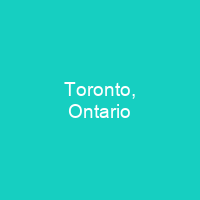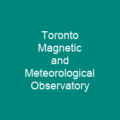Toronto is the capital city of the Canadian province of Ontario. With a recorded population of 2,731,571 in 2016, it is the most populous city in Canada. The city is the anchor of the Golden Horseshoe, an urban agglomeration of 9,245,438 people surrounding the western end of Lake Ontario. It is home to the Toronto Stock Exchange and the headquarters of Canada’s five largest banks.
About Toronto, Ontario in brief

In the 1660s, the Iroqois established two villages within what is today Toronto, Ganatsekwyagon and Teiaiagon on the banks of the Humber River. By 1701, Mississauga had abandoned the Toronto area at the end of the Beaver Wars with most returning to their homeland in New York. The British defeated the French and their allies in the Seven Years’ War and abandoned the area in 1759. In 1787, Lord Dorchester arranged the British Purchase with the Mississauga for the land to compensate them for their losses in the Thirteen Colonies. The area became part of the British colony of Upper Canada and became the capital of the new province. In 1867, the city was designated as theCapital of Ontario in 1867 during Canadian Confederation. It has since expanded past its original borders through both annexation and amalgamation to its current area of 630. 2 km2. The diverse population of Toronto reflects its current and historical role as an important destination for immigrants to Canada. More than 50 percent of residents belong to a visible minority population group, and over 200 distinct ethnic origins are represented among its inhabitants. Toronto is a prominent centre for music, theatre, motion picture production, and television production. It is also home to Canada’s major national broadcast networks and media outlets.
You want to know more about Toronto, Ontario?
This page is based on the article Toronto, Ontario published in Wikipedia (as of Dec. 29, 2020) and was automatically summarized using artificial intelligence.







